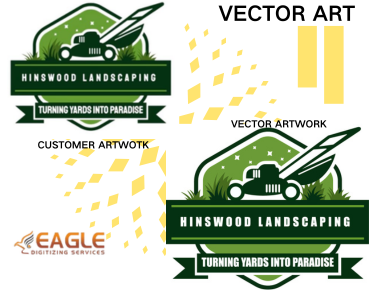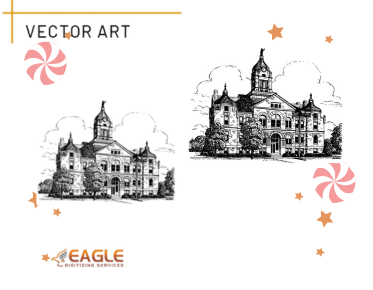Mastering Craft: What Are Program Files for Embroidery?
Unlocking the
world of embroidery can feel like stepping into a vibrant, textured dream. At
the heart of this captivating craft lies a crucial element: program files.
Understanding these files is not just beneficial—it’s essential for anyone
looking to transform digital designs into beautiful stitched creations. Whether
you’re a hobbyist or a seasoned pro, grasping the nuances of embroidery programfiles can elevate your projects, enabling you to bring your unique visions to
life with precision and flair.
What Are Program Files? A Quick Overview
Defining
Program Files: What You Need to Know
Program files for
embroidery are digital blueprints that guide embroidery machines in stitching
designs onto fabric. These files contain intricate instructions, dictating
everything from stitch type to color changes. Each program file is essentially
a treasure trove of data, detailing how the embroidery should be executed,
ensuring the final product is nothing short of spectacular.
The
Role of Program Files in Embroidery Machines
In the realm of
embroidery, program files serve as the communication bridge between your
computer and the embroidery machine. They translate your digital designs into
actionable commands, allowing the machine to interpret patterns, execute
stitches, and create stunning visual effects. Without these files, the
intricate world of embroidery would remain tantalizingly out of reach.
Different
Types of Program Files for Embroidery
Embroidery files
come in various formats, each tailored for different machines and software.
From standard formats like PES and DST to specialty files designed for specific
techniques, the landscape of program files is diverse. Understanding these
types will empower you to choose the right file for your project, ensuring
seamless execution.
Common File Formats Used in Embroidery
Exploring
Popular Embroidery File Formats: PES, DST, and More
Among the
plethora of embroidery file formats, PES and DST reign supreme. PES files, used
by Brother and Baby Lock machines, allow for color changes and intricate
detailing. DST files, favored by many commercial machines, focus on stitch data
and are widely compatible. Additionally, formats like EXP, JEF, and VP3 each
bring their unique attributes to the table, catering to various embroidery
needs.
Understanding
the Differences: Which Format to Choose?
Choosing the
right file format can make or break your project. PES files are excellent for
colorful, detailed designs, while DST files are preferred for simpler, more
straightforward stitching. When selecting a format, consider your machine’s
compatibility, the design's complexity, and the desired outcome. Each format
serves a distinct purpose, so understanding their differences will guide you to
the optimal choice.
How
File Formats Affect Your Embroidery Design
The format of your embroidery file influences not just compatibility but also the quality of the final product. Some formats retain more detail and color information, while others prioritize stitching efficiency. A file's structure can affect the speed of your machine and the intricacies of your design. Being aware of these factors can lead to better decision-making in your embroidery endeavors.
Creating Embroidery Program Files
How
to Design Your Embroidery Files
Creating your
embroidery files can be a thrilling endeavor, allowing for complete creative
freedom. Begin by designing your artwork using vector graphic software or
specialized embroidery design software. Once your design is complete, you can
convert it into an embroidery file format using compatible software, ensuring
it’s ready for stitching.
Software
Options for Creating Program Files: A Comparison
Numerous software
options exist for creating embroidery files, each with unique features and
capabilities. Programs like Wilcom Embroidery Studio and Hatch Embroidery
Software offer robust design tools, while free options like Ink/Stitch can
serve as excellent starting points. Comparing these options based on usability,
features, and price can help you find the best fit for your embroidery journey.
Tips
for Converting Designs into Program Files
Converting
designs into program files requires attention to detail. Ensure your artwork is
clean and well-defined, avoiding overly intricate details that may be difficult
to replicate in stitches. Use the software’s conversion tools to adjust stitch
types and settings appropriately. A thoughtful approach during this process
will yield better results on the fabric.
Using Embroidery Software
An
Introduction to Embroidery Software: What to Look For
When diving into
the world of embroidery, selecting the right software is crucial. Look for
user-friendly interfaces, a range of design tools, and compatibility with your
embroidery machine. Advanced features, such as editing capabilities and a
variety of stitch types, can also enhance your creative process, making it
easier to achieve your desired results.
Step-by-Step
Guide: Installing and Setting Up Your Software
Installing
embroidery software typically involves straightforward steps. Start by
downloading the program from a reliable website. Follow the installation
prompts, ensuring your computer meets the requirements. Once installed, set up
the software by connecting it to your embroidery machine, allowing for seamless
file transfers and design management.
Navigating
the Interface: Key Features You Should Know
Familiarize
yourself with your software’s interface to maximize your efficiency. Key
features to explore include design tools, stitch settings, and file management
options. Understanding how to navigate these elements will empower you to
manipulate designs, make adjustments, and create stunning embroidery files with
ease.
Loading Program Files onto Your Embroidery Machine
Connecting
Your Computer to the Embroidery Machine: A Simple Guide
Connecting your
computer to your embroidery machine is a pivotal step in the embroidery
process. Depending on your machine, you may use a USB cable, wireless
connection, or direct cable connection. Follow the manufacturer’s instructions
to establish a successful connection, ensuring that both devices can
communicate effectively.
Transfer
Methods: USB, Direct Connection, and More
Embroidery files
can be transferred using various methods. USB drives are a popular choice,
allowing for easy transport of files from computer to machine. Direct
connections are advantageous for real-time transfers, while cloud-based options
provide convenient access to your files from multiple devices. Selecting the
appropriate method can streamline your workflow and enhance your efficiency.
Common
Issues When Transferring Files and How to Fix Them
File transfer
issues can occasionally arise, leading to frustration. Common problems include
incompatible formats, corrupt files, or connection failures. To troubleshoot,
double-check the file format, ensure your connections are secure, and restart
both devices if necessary. Being proactive about these potential issues can
save you time and headaches.
Understanding the Embroidery Process
Breaking
Down the Embroidery Workflow: From File to Fabric
The embroidery
workflow involves several stages, starting with file creation and ending with
the final stitch on fabric. After transferring your program files to the
machine, select your design and set up the fabric. Once everything is ready,
the machine will follow the programmed instructions, stitching out your design
with precision. Understanding this workflow will help you anticipate each step
of the process.
How
Program Files Control the Stitching Process
Program files are
the heart of the embroidery machine’s operation. They dictate every aspect of
the stitching process, from the order of stitches to the speed and pressure
applied. A well-structured program file ensures that your design is executed
flawlessly, allowing for intricate details and vibrant colors to shine through.
Setting
Up Your Machine for Different Designs
Different designs
require specific machine settings. Factors like fabric type, stitch density,
and thread weight all influence the setup process. Always refer to your
machine's manual for guidance on optimal settings for each project, ensuring
the best possible outcome for your embroidery.
Choosing the Right Program Files for Your Project
Assessing
Your Project Needs: Size, Detail, and Fabric Type
Before selecting
program files, assess your project needs carefully. Consider the size of the
design, the level of detail required, and the type of fabric you’ll be working
with. These factors will guide you in choosing the right file format and
settings, ensuring a successful embroidery experience.
How
to Select the Best Program File for Various Materials
Different
materials behave uniquely during the embroidery process. Heavier fabrics may
require more robust stitching patterns, while delicate materials might need
lighter, more intricate designs. Familiarizing yourself with how various
materials interact with program files will help you select the most suitable
options for your projects.
Combining
Designs: Layering Program Files for Complex Projects
Layering program
files can add depth and complexity to your embroidery projects. By combining
different designs, you can create intricate pieces that stand out. Ensure that
your machine is capable of handling layered files and pay attention to the
order of stitching to achieve a harmonious final product.
Customizing Program Files
Editing
Embroidery Files: Making Adjustments with Software
Editing your
embroidery files allows for personalization and fine-tuning. Use your
embroidery software to adjust stitch types, sizes, and densities. This
flexibility ensures that your final product aligns perfectly with your vision,
allowing you to create unique designs tailored to your preferences.
Adding
Personal Touches: Monograms and Names
Incorporating
personal touches, such as monograms or names, adds a unique flair to your
embroidery projects. Many embroidery software programs offer tools specifically
for adding text. Select appropriate fonts and sizes, ensuring that the text
complements your design seamlessly for a polished look.
How
to Modify Colors and Stitch Types in Your Designs
Modifying colors
and stitch types can dramatically alter the final appearance of your
embroidery. Use your software’s color palette to experiment with different
hues, and choose stitch types that enhance your design’s visual appeal. This
customization allows you to create truly one-of-a-kind pieces that reflect your
style.
Troubleshooting Common Issues
Common
Errors in Program Files and How to Solve Them
Embroidery can be
a finicky process, and errors in program files can lead to unsatisfactory
results. Common issues include skipped stitches, misaligned designs, or
incorrect thread tension. Identifying these errors early and consulting your
machine’s manual can help you troubleshoot effectively and maintain the quality
of your work.
Understanding
Error Codes on Your Machine
Error codes are
your machine's way of communicating issues. Familiarizing yourself with these
codes will enable you to address problems quickly. Always keep your machine's
manual handy for reference, as it will often provide detailed explanations of
error codes and their solutions.
Tips
for Avoiding Stitching Problems
Preventing
stitching problems requires a proactive approach. Regularly maintain your
machine, ensuring it is clean and well-lubricated. Additionally, double-check
your settings before starting a new project, and always use high-quality
materials to reduce the likelihood of issues arising during the embroidery
process.
Understanding program files for embroidery is key to unlocking the full potential of your embroidery machine and creating stunning designs. By mastering these files, you can ensure precise stitching, efficient workflow, and a seamless creative process that enhances your craftsmanship. Embrace the knowledge of program files, and elevate your embroidery projects to new heights of artistry and professionalism.
.png)


